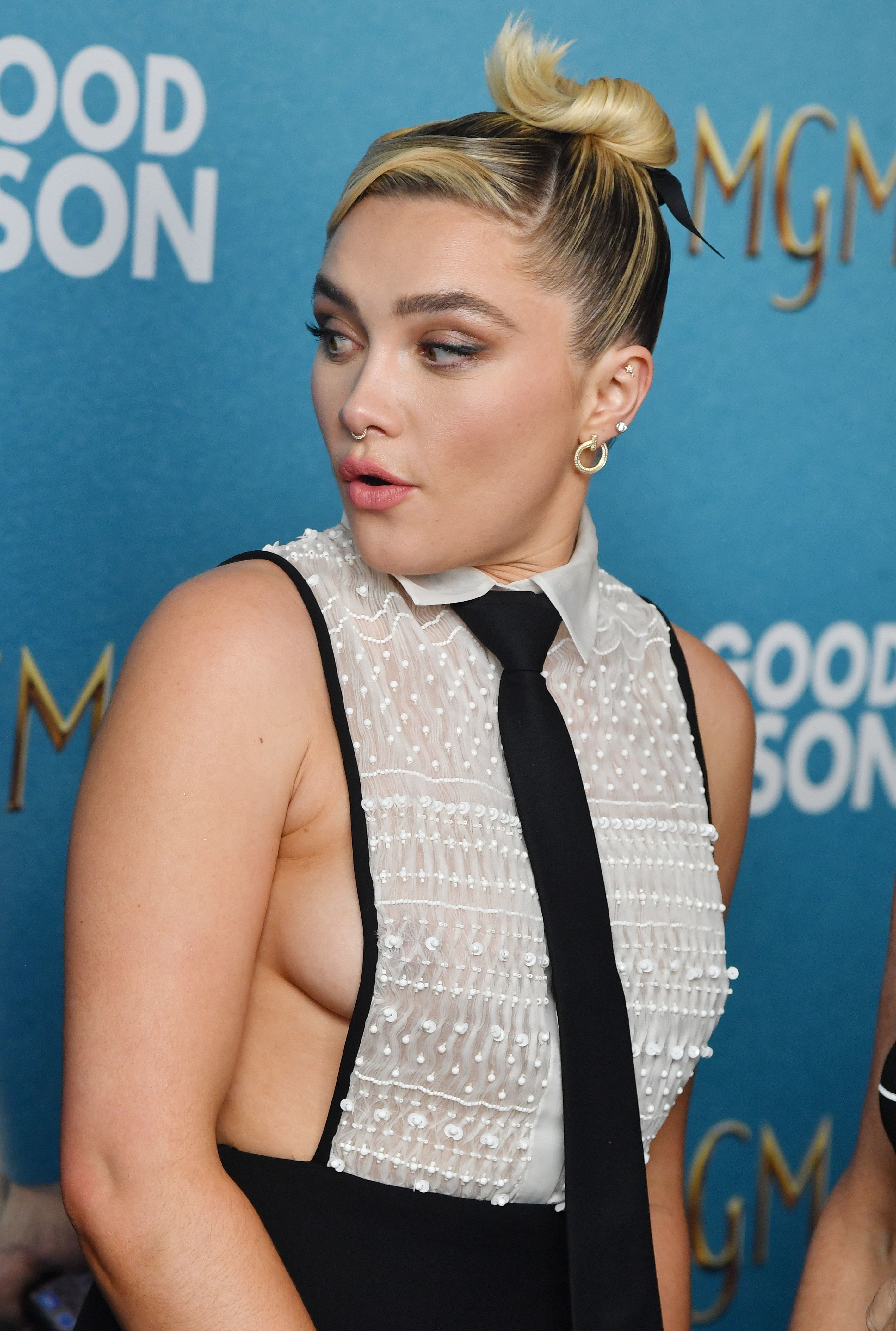The tie has served masculinity more than any other fashion accessory and is probably the garment that best portrays the evolution of men's fashion, its restrictions and its formulas to escape from them (from the eighteenth century, the 'fantasy' is being relegated in favor of sobriety, and the tie will be, at specific times, the only 'license' for coquetry that will be tolerated to males).
Miss Goldie, 1904. GETTY IMAGES
The modification of its width, length, fabric and pattern, as well as the knot chosen - Windsor, double Windsor, Eldredge, Kelvin, Balthus ... - constitutes a much more complex code than it seems at first glance, which places the wearer of the tie in an era, a context, a social status, a 'club'... as a textile fingerprint. "What kind of man is this," the tie speaks. So masculine is it, that even today, when the garment is worn by a woman, it continues to attract attention.
That's why Valentino's last show (autumn-winter 2023/2024), where all the looks that went on the catwalk wore a tie in an urban key or with decidedly nocturnal and sophisticated proposals, from wool to sequin, from miniskirt to tunic ..., was so relevant.
LAUNCHMETRICS SPOTLIGHT
Valentino brings back the tie
Valentino has by no means been the first firm to propose the return of the tie – from Vivienne Westwood to Gucci, Kenzo or Christian Dior, ties have been peeking on the catwalk in recent seasons – but it has done so more decisively, especially giving the garment an absolutely multifaceted 'look'; Valentino has gone so far as to turn the tie into a dress – he surpasses that – in his last show.
LAUNCHMETRICS SPOTLIGHT
Valentino's tie-dress
Turning a halter neckline into a tie or vice versa can be risky, but, to the tests we refer, it can also be as successful as in this proposal.
LAUNCHMETRICS SPOTLIGHT
Tie on transparencies
Another proposal from Valentino's latest show that demonstrates how a tie can be part of almost any look.
LAUNCHMETRICS SPOTLIGHT
Sublime combination
The star model of Valentino's last show, which inevitably reminded Kraftwerk's 'Man Machine', raised the shirt to the level of evening dress and the tie, to his best squire.
LAUNCHMETRICS SPOTLIGHT
The return of the 'garçon' style
Among its latest ready-to-wear proposals, Dior also opted for the tie, in a decidedly youthful and neutral language, tailored to the times.
LAUNCHMETRICS SPOTLIGHT
Thom Browne had already warned about it...
What may be the most boring garment in the world has also been revived thanks to the work of charismatic designers such as Thom Browne, who has taken sartorial to a new level in both male and female formats. His ties, from the fundamental black to the prints with transverse stripes, polka dots or checkered are basic accessories in any of the outfits of the innovative American creator.
LAUNCHMETRICS SPOTLIGHT
Ralph Lauren saw it first
But if the contemporary women's tie has a 'father', it's Ralph Lauren. When the American designer dressed Diane Keaton in 1977 for 'Annie Hall' he invented a whole style that would go down in fashion history. In its most recent shows, the firm has claimed the DNA of this trend with blazers and ties that have much of that seventies romanticism, brought to current patterns.
It is true that Diane Keaton already 'wore to' the shoot much of that style where men's garments are brilliantly rubric with very feminine details. In any case, the look was not at all casual, nor imposed. She was one with the kind of woman I wanted to represent: independent, determined, with clear ideas of her own. An emancipated woman who made her own decisions. Among them, the conquest of masculine attributes.
GETTY IMAGES
Transgressive and beyond
Women began to wear ties in the nineteenth century, and very soon their use was linked to certain political claims, such as the right to vote for women (in conquests, whatever type they are, 'snatching' the symbols from the 'contender', whether flags or ties, is usually the first step to victory). And simultaneously, inevitably, the symbiosis between the tie on a woman's neck and the idea of independence curdled, which in turn turned it into a transgressive garment, with erotic connotations. As in this 1927 image of the first it girl, Clara Bow, the flapper par excellence, the 'man-eater' who shook Hollywood and one of the first sex-symbols of cinema.
GETTY IMAGES
The eroticism of ambiguity
Another erotic phenomenon that triggers the use of the tie is ambiguity, an aspect that the bisexual star Marlene Dietrich (1901-1992) knew how to exploit better than anyone from the beginning of her career. In this photo from 1932, when he was already an absolute Hollywood star, he makes clear the power that emanates from his image, his controlled mixture of self-confidence and blatant use of masculine gestures (and appearance).
LAUNCHMETRICS SPOTLIGHT
Diverse and sublime
The street style of recent fashion weeks has come to reconfirm that the tie is for all looks and also for all styles and bodies. The conclusion, in the form of a paradox, that we can draw is that the 'new tie' uniformizes the difference. If on the catwalk Valentino has shown that the tie marries everything, on the street, the tie has shown that it marries all.
Today's ties in protest
If anyone believes that the tie has lost its transgressive potency over the years, they are mistaken. Without going any further, in July 2022, 15 French left-wing parliamentarians stood in Congress wearing ties to protest against criticism from the right about the "relaxed" dress with which some used to go to the hemicycle. "Today we wear a tie because our way of dressing and our body only belongs to us. Women are in politics and, although some are bothered, we are here to stay, "said in her tweet the president of the group of La France Insoumise (LFI) Mathilde Panot.
According to The Trust Project criteria
Learn more

